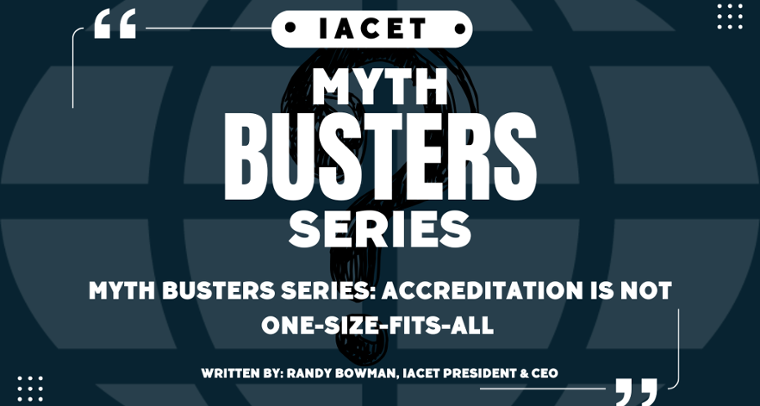Myth Busters Series: Accreditation is NOT One-Size-Fits-All

Debunking the myth that accreditation is one-size-fits-all, this article explores how IACET’s descriptive standard supports flexibility for providers of all sizes and industries.

Debunking the myth that accreditation is one-size-fits-all, this article explores how IACET’s descriptive standard supports flexibility for providers of all sizes and industries.

Learn how to secure leadership and financial support for accreditation by framing it as a strategic investment. This guide helps training professionals align accreditation with ROI, business goals, and risk mitigation to win over decision-makers.

Not all Continuing Education Units (CEUs) are created equal. This blog explores the critical differences between accredited CEUs, which follow rigorous standards for quality and learner verification, and self-proclaimed CEUs, which may lack oversight and credibility. From understanding what a CEU truly is, to recognizing the red flags of unaccredited offerings, this post helps learners and employers make informed choices. It highlights the role of IACET accreditation in promoting consistent, high-quality education and explains how to identify legitimate CEU providers. If professional advancement or regulatory compliance is your goal, choosing accredited CEUs is essential.

Many small organizations hesitate to pursue accreditation, thinking it’s out of reach financially. But when you break down the costs and consider the return on investment, accreditation is not just affordable—it’s a game-changer. Find out how IACET accreditation provides credibility, market access, and long-term value for just $165/month. Read more in our latest blog!

Why does continuing education feel frustrating and ineffective for so many professionals? This blog explores the root causes of learner disengagement and highlights how IACET is bridging the gap through upcoming 2025 symposiums on neuroinclusivity and digital accessibility. Discover how continuing education can evolve into an inclusive, engaging, and impactful experience.